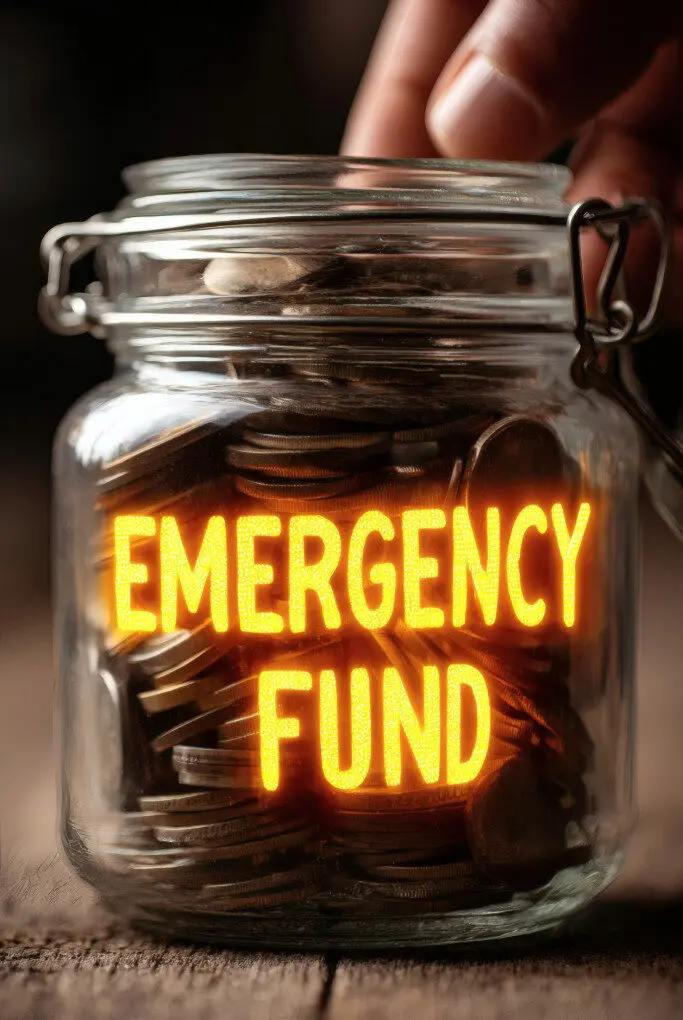Alright, let’s be real: budgeting isn’t exactly the first thing you think of when you’re envisioning the dream life of a carefree wanderer sipping cocktails on a beach. But, if you want to stop stressing about your finances every month and take control of your life (hello, financial freedom!), creating a budget is where it all starts.
In this article, I’m going to walk you through 10 simple steps to create a budget that actually works. Don’t worry – I’ll keep it chill, practical, and, most importantly, something you can actually stick with.
Let’s get into it!

Step 1: Know Why You’re Budgeting (And Get Motivated)
Alright, first things first. Why are you even thinking about a budget? Are you saving for a vacation? Tired of drowning in bills? Want to stop worrying about how to pay for your kids’ daycare? Whatever the reason, get clear on your “why”. If you’re not motivated, chances are you’ll abandon your budget faster than you can say “impulse buy.”
Pro Tip: Write down your reasons and stick it on your fridge, phone, or wherever you’ll see it every day. Trust me, the motivation boost will help.
Step 2: Track Your Income (Yes, That Means All of It)
This might sound boring, but before you can budget, you need to track all your income sources. It doesn’t matter if you’re a full-time mom hustling side gigs, a 9-to-5er, or you make money through affiliate marketing like me (shameless plug!), write it all down.
- Regular paycheck
- Side hustles (even the small ones)
- Any passive income (if you’re lucky enough to have some)
- Random cash gifts (yes, even those!)
I recommend using apps like Mint or YNAB to make this easier. These tools help you see exactly where your money’s coming from, which is the first step in knowing where it’s all going.

Step 3: List Your Expenses (Don’t Forget Anything)
Now that you’ve got your income in check, it’s time to see where your money’s going. And I mean EVERYTHING. If you’re like me, you probably have a million subscriptions you forgot you even signed up for, and they’re quietly eating away at your bank balance.
Some expenses to consider:
- Fixed Expenses: Rent/mortgage, utilities, subscriptions
- Variable Expenses: Groceries, gas, dining out (sorry, Starbucks)
- Debt Payments: Credit cards, loans, etc.
- Savings/Investments: If you’re already putting money aside, this is the fun part! 💸
Pro Tip: Use your bank statements or a budgeting app to break everything down. That way, you won’t miss those sneaky monthly subscriptions.

Step 4: Categorize Your Expenses
At this point, you’ve got a list of everything you spend money on. But, how the heck do you make sense of it all? Categorize it.
For example:
- Needs: Housing, utilities, food, insurance
- Wants: Entertainment, shopping, eating out
- Debt: Credit cards, student loans, payday loans (don’t even get me started on payday loans)
- Savings/Investments: Retirement, emergency fund, etc.
Once it’s categorized, you’ll see where you’re overspending and where you can cut back. Spoiler alert: That daily latte may be the reason you can’t afford a vacation.
Step 5: Set Your Financial Goals
Now that you have a clear picture of your income and expenses, it’s time to set some financial goals. Don’t just say, “I want to save money” – that’s too vague. Get specific.
Examples of financial goals:
- Build a $1,000 emergency fund by the end of the year
- Pay off credit card debt within 6 months
- Save $5,000 for a vacation by next summer
Make sure your goals are realistic and broken down into manageable chunks so they don’t feel overwhelming. And yes, the goal of “don’t spend money on impulse shopping” is also a valid goal. 😊
Step 6: Create Your Budget Plan (The Fun Part)
Here’s where we get into the nitty-gritty of creating your actual budget. There are several methods for this, but let’s start with a simple one:
The 50/30/20 Rule – This is the easiest budgeting rule and works for most people:
- 50% Needs: Rent, bills, groceries, etc.
- 30% Wants: Dining out, entertainment, shopping
- 20% Savings/Debt Repayment: Emergency fund, retirement, paying off loans
If that seems like too much math for your brain right now, don’t worry! Budgeting apps like Mint and You Need a Budget (YNAB) automate most of this for you. And they even do cool things like send you reminders to keep you on track!
Step 7: Stick to Your Budget (Yes, Really)
Okay, you’ve got your budget all set. But let’s be real: sticking to it is the hard part. The trick? Make it easy for yourself.
Here’s what I’ve learned over the years:
- Use cash for discretionary spending (like eating out) – It’s a lot harder to spend cash mindlessly.
- Set up automatic transfers to your savings account so you pay yourself first. Your future self will thank you.
- Track your spending regularly – Don’t just set it and forget it. Check in weekly or monthly to ensure you’re staying on track.
Step 8: Review and Adjust Regularly
Life happens, right? Maybe your expenses change, or you get a surprise windfall (fingers crossed!). Review and adjust your budget regularly.
- Had a bad month? Adjust your discretionary spending.
- Extra money in the bank? Throw it into your savings or pay down some debt. 🏦
Budgeting isn’t set-it-and-forget-it. The more you review your budget, the better you’ll get at knowing where your money needs to go. And you’ll feel a lot more in control of your finances. 🙌
Step 9: Set Up an Emergency Fund (The Real MVP)
Life has a way of throwing curveballs – like car repairs or an unexpected medical bill. That’s where your emergency fund comes in. Ideally, you should aim to save 3–6 months’ worth of expenses. This way, you’re not scrambling to pay bills when life gets messy.
How to build it:
- Start with small, achievable goals: Save $500, then $1,000, and so on.
- Set up an automatic transfer to your emergency fund account.
- Don’t dip into it unless it’s a true emergency (and yes, a shopping spree does not count as an emergency).
Step 10: Keep Improving and Growing
Lastly, remember that budgeting is a continuous process. As you get more comfortable with your money, you’ll get better at fine-tuning your budget and building wealth. Look for ways to optimize:
- Find better deals on groceries or insurance.
- Invest your savings to grow your wealth over time.
- Review your financial goals every 6 months to see how much closer you are to hitting them.
Tip: The sooner you start, the sooner you’ll see results. Don’t wait for the “perfect time” because guess what? It’s never going to come. Start today, and you’ll thank yourself later!
Conclusion: Budgeting Doesn’t Have to Be a Drag
So, there you have it – 10 easy steps to create a budget that works for you. It might take a little time to get used to, but once you get into the groove of budgeting, you’ll feel more empowered with your finances.
Remember, budgeting isn’t about depriving yourself; it’s about giving yourself control. You’re making a plan for your money to work for you, instead of the other way around. And trust me, it’s totally worth it.
Start small, keep it real, and adjust as needed. You’ve got this. 💪






